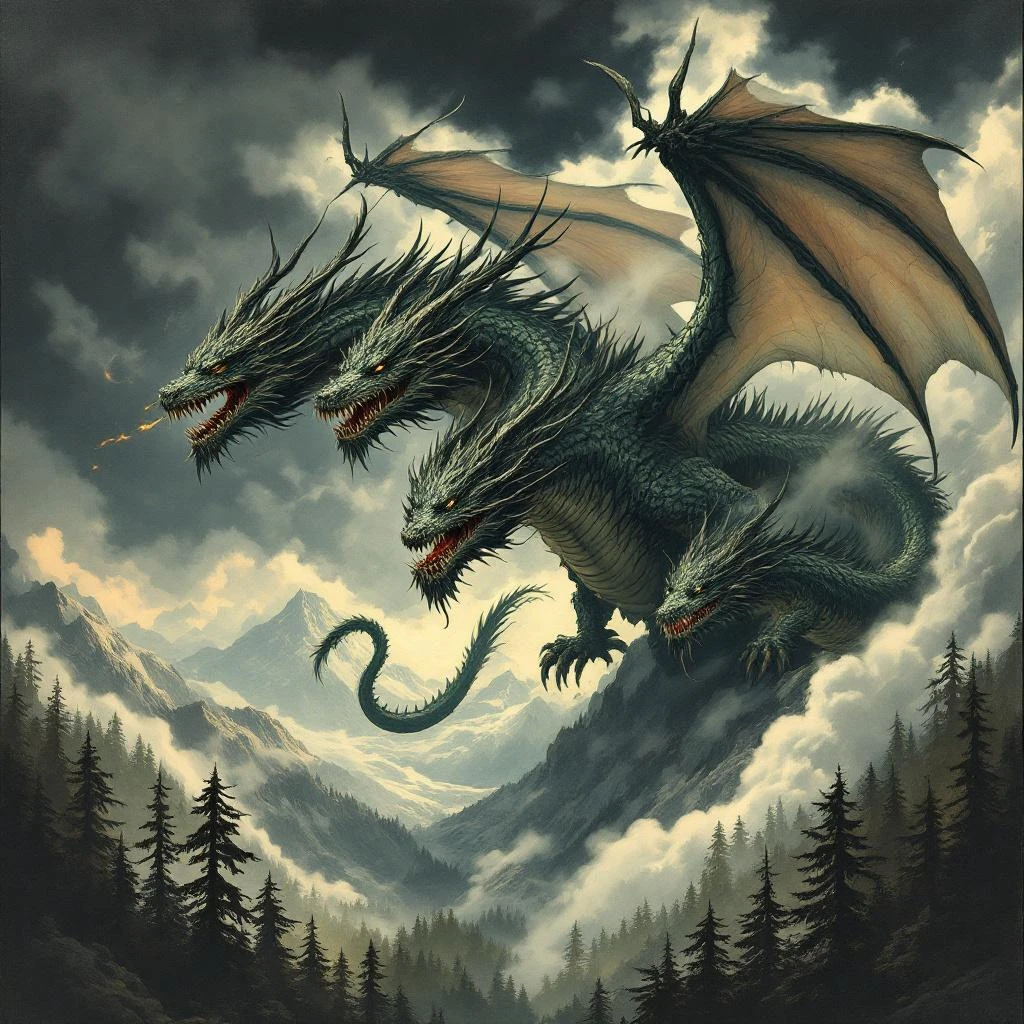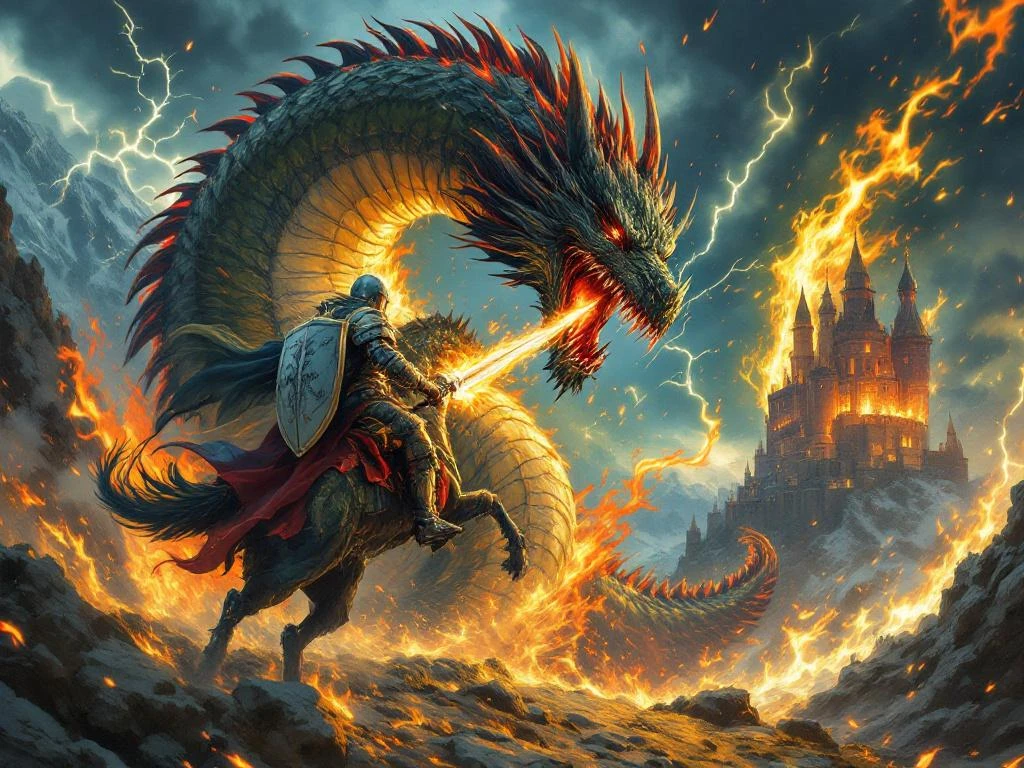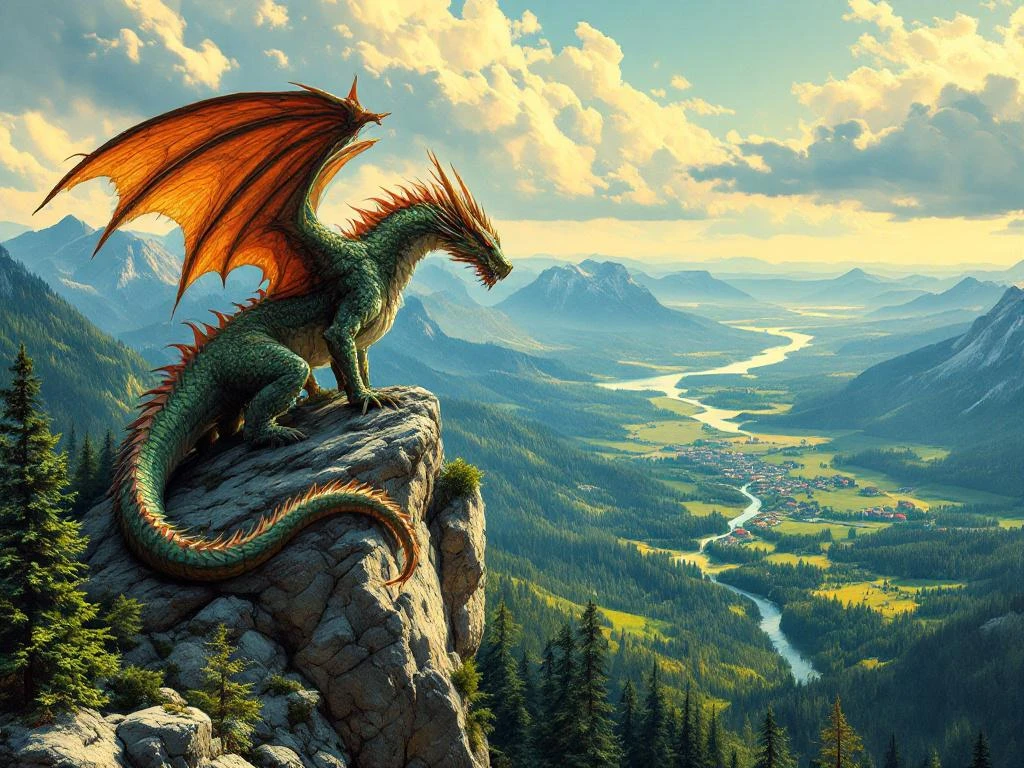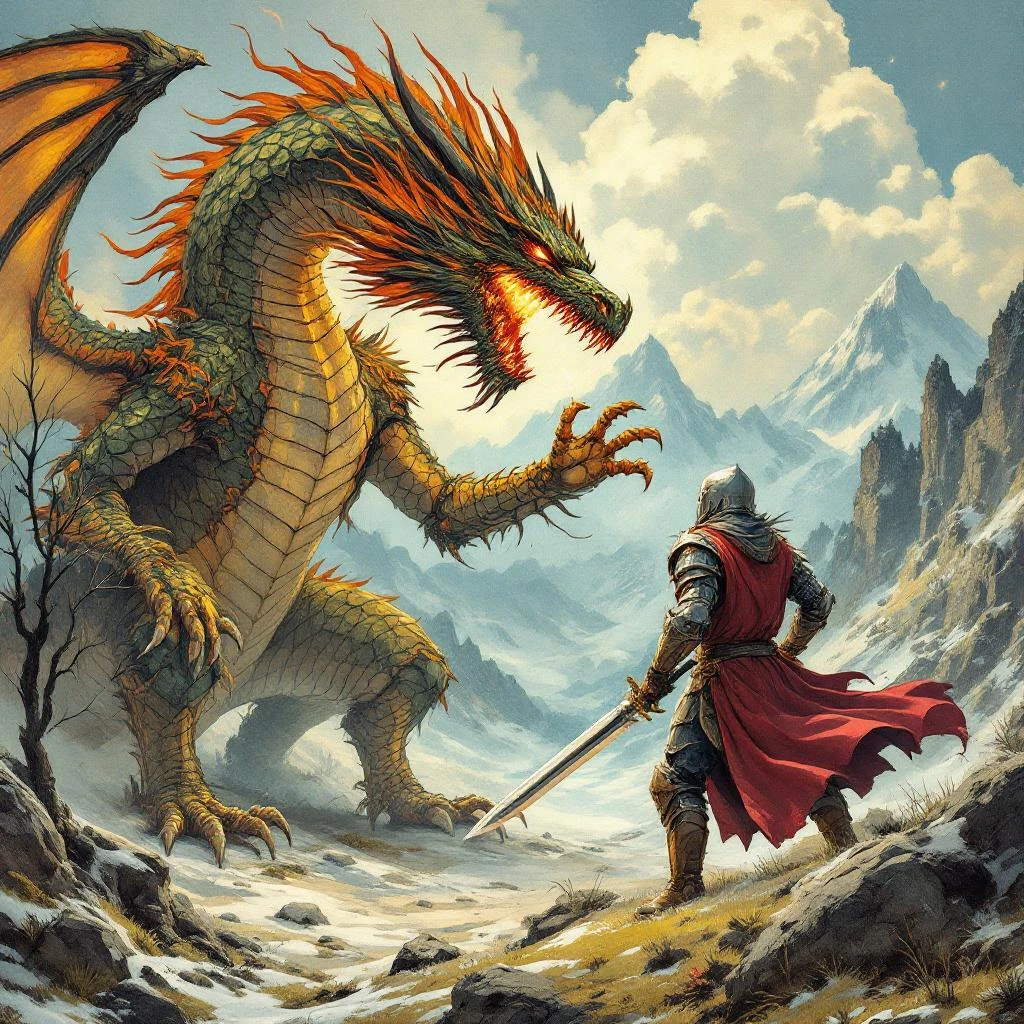Zmey Gorynych
VillainA multi-headed dragon from Russian folklore that breathes fire and often guards treasures or terrorizes lands.

Origins & Mythology
Zmey Gorynych (Змей Горыныч) is one of the most prominent dragons in Slavic mythology, particularly in Russian byliny (heroic epics) and fairy tales. The name "Zmey" comes from the Slavic word for "serpent" or "dragon," while "Gorynych" is often interpreted as "son of the mountain" or derived from "goret'" meaning "to burn."
Unlike Western European dragons which are often portrayed as purely malevolent creatures, Zmey Gorynych represents a more complex figure in Slavic mythology. While generally antagonistic, the dragon sometimes serves as a test of heroic virtue rather than simply an evil to be destroyed.
The character appears most prominently in the byliny cycle concerning the knight Dobrynya Nikitich, one of the three greatest bogatyrs (legendary knights) of Russian folklore. These epic tales date back to at least the 10th-12th centuries and were preserved through oral tradition for centuries.
Characteristics & Abilities
Zmey Gorynych is typically described with the following distinctive features:
- Multiple Heads: Usually three heads, though some versions describe six, nine, or even twelve heads. Each head can think and speak independently.
- Fire Breathing: Capable of breathing intense fire that can melt metal and scorch the earth. The fire comes from all heads simultaneously in battle.
- Flying Ability: Despite its massive size, Zmey Gorynych can fly and often swoops down on its victims from great heights.
- Regeneration: In some tales, cut-off heads can regrow unless the wounds are immediately cauterized with fire.
- Intelligence: Unlike mindless beasts, Zmey Gorynych is cunning and can speak, sometimes attempting to negotiate or trick heroes.
The dragon often dwells in caves or mountainous regions and is frequently associated with guarding treasures, captive maidens, or magical objects like the Water of Life.
Gallery

Dobrynya Nikitich battling the three-headed Zmey Gorynych

Zmey Gorynych breathing fire from its mountainous lair
Cultural Impact
Zmey Gorynych represents one of the ultimate challenges in Russian heroic literature. Unlike Koschei the Deathless who embodies cunning evil, or Baba Yaga who represents the ambiguous forces of nature, Zmey Gorynych symbolizes raw, destructive power that must be overcome through courage and strength.
The dragon has appeared in numerous adaptations in Russian literature, film, and art. Soviet-era interpretations sometimes portrayed dragon-slaying as metaphors for overcoming natural disasters or foreign invaders.
In modern Russian popular culture, Zmey Gorynych has been featured in animated films, video games, and children's books, often depicted with a somewhat comedic twist while retaining its role as a formidable antagonist.
The character also influenced the broader Slavic cultural understanding of dragons, which differs significantly from Western dragon lore in its emphasis on the dragon's intelligence and the heroic nature of those who face it.
Related Characters
- Koschei the Deathless — Fellow major antagonist in Russian folklore
- Baba Yaga — Another supernatural challenge for heroes
Tales featuring Zmey Gorynych

The Bold Knight, the Apples of Youth, and the Water of Life
A heroic quest tale of three brothers seeking magical apples and water to heal their father, where courage and honesty triumph over treachery.
References & Further Reading
- Dobrynya Nikitich and Zmey Gorynych (Russian bylina)
- Russian Heroic Epics (byliny collection)
- The Bold Knight, the Apples of Youth, and the Water of Life